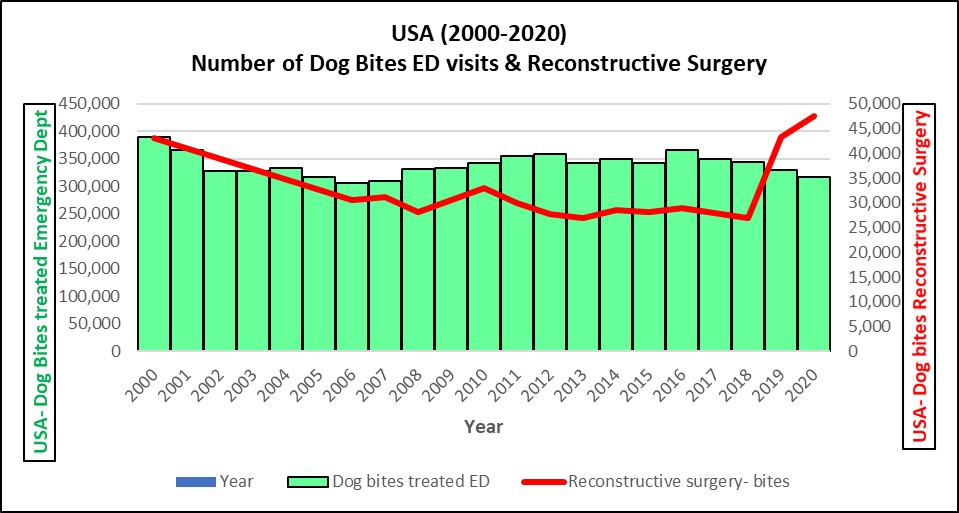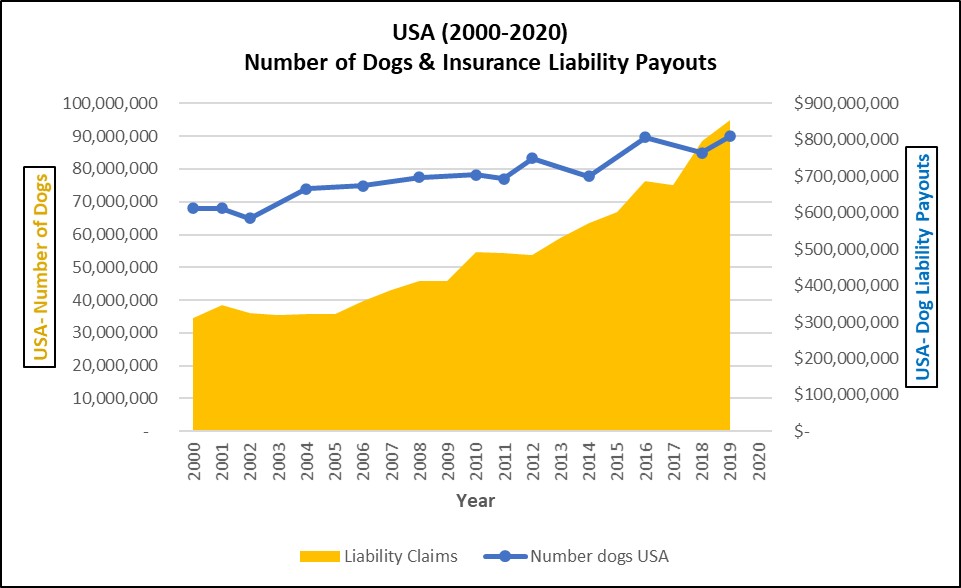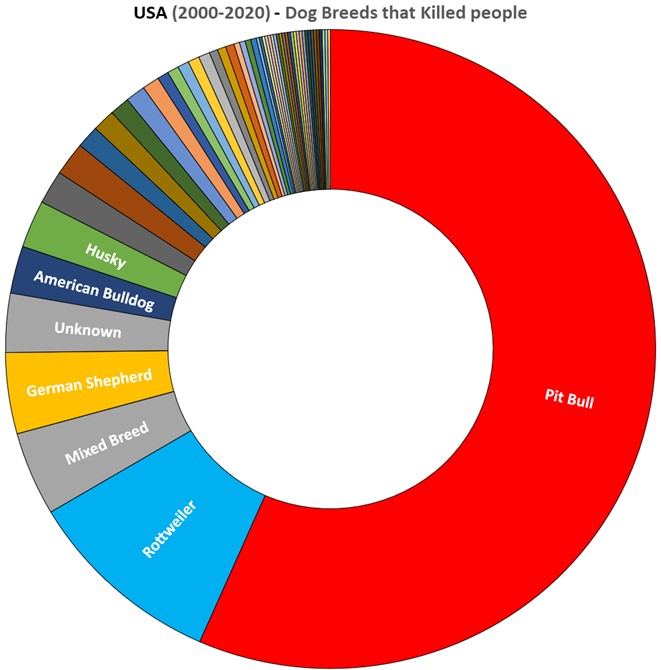We had a dog in our household growing up, it was seen as our father's dog- not that smart and grumpy with a modicum of training. Some neighbourhood kids were playing with it when it bit one of them on the face, a horrible moment to accept that our family pet hurt someone. The only positive from this was that it was a Dachshund breed and its bite was small and only broke the skin and that it backed off immediately. However, I can only imagine the psychological impact this incident had on the neighbour's girl growing up. In hindsight there could have been a worse outcome if it had been a different breed of dog.
In Australia there is no national database of dog attacks/bites. NSW is the only state that has attempted to compile this information from the various local government councils and identify the dog breeds responsible. The graph below shows the main dog breeds reported as attacking people from 2018-2021. The Staffordshire Terrier (American & Bull) breed has been identified as responsible for most of these attacks on people.
USA actually does have a useable national database, compiled by the CDC, of patients presenting to the Emergency Department (ED) with dog bites, while the ASPS tables annual reconstructive surgery of dog-bite victims.
The CDC calculates that at least 4.5 million people in the US are bitten by dogs each year with more than 800,000 requiring medical attention.
1% of all ED injuries were due to dog bite injuries, doesn’t sound like much but from 2001-2020 this represents 6,747,737 people attacked by dogs with injuries requiring going to the hospital emergency department.
The ASPS reports that 30,000 to 50,000 dog-bite reconstructive surgeries are carried out each year in the US. Of particular note is that the last 2 years of reported data seems to indicate a 70% increase in patients requiring reconstructive surgery- either a particularly aggressive dog breed is becoming trendy to own, or the ASPS changed their definitions which incorporates new data or accessing new sources of information.
From 2000-2019 the number of dog ownerships rose from 68m to 90 million, over the same period insurance liability payouts have risen from $300m to $900 million (the number of claims is about 16,000 claims per year, however the payouts have tripled!). This suggests lawyers are cashing in on this phenomenon and insurance premiums will obviously increase in response.
The CDC also lists cause of deaths annually- from 2000 to 2020 the number of dogs killing people is 707. It is a low number relative to the number of dog attacks, however 1/3 of the fatalities are children (0-14yo). As a parent one wants to minimise risks to kids and when you see the online injury photos of devastating bites/tears the thought is to keep control or even sterilise some of these breeds. In Australia some breeds are banned, however in the US no federal bans on certain breeds, this appears to be done only on a state/city level.
What to do?- business as usual does not seem an appropriate response for our most vulnerable in society, particularly as we can mitigate the risks. One can do the following;
ban certain breeds that have been bred for aggressiveness, have impulse control issues, and known to attack people
muzzle the most aggressive breeds in public and when non-family members interact with the dog
sterilise certain breeds
owner and child education of animal behaviours is an option (but no victim blaming)
national databases required to generate useful data and discussions











コメント